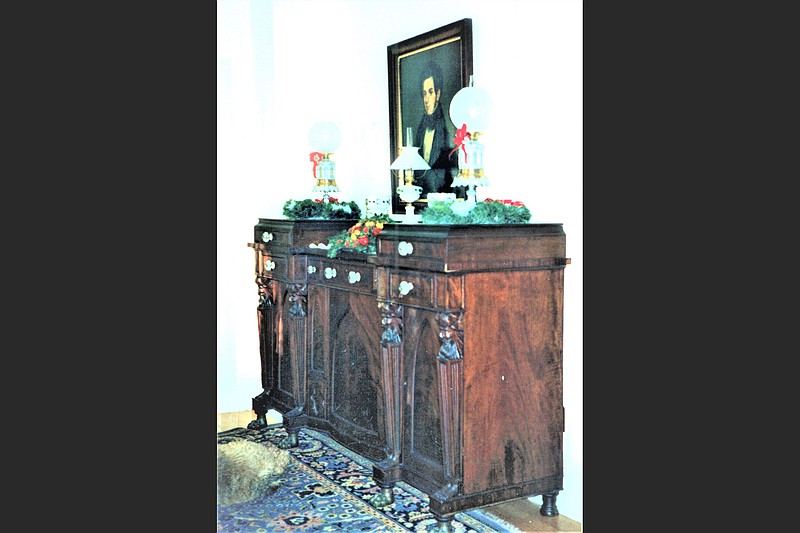DEAR HELAINE AND JOE: This sideboard has been in the family for many years. The story handed down is it was made by a known Philadelphia cabinetmaker named "Barry" and it is signed. It has its original glass knobs. Any information and its value would be appreciated.
Thank you, — H.P.
DEAR H.P.: The man H.P. may be referring to is Joseph B. Barry (1757-1838), who worked at 148 S. Third St. in Philadelphia. For a time, he worked with his son, Joseph, and there is also a note we found that indicates that he may have had another partner late in his career.
Barry was born in Dublin, but he trained in his craft in London, then immigrated to the United States, where he set up shop in Philadelphia. It is thought that Barry came to Philadelphia around 1790, but when the yellow fever epidemic of October 1793 hit the city, he fled the stricken town along with the federal government, which was located in Philadelphia at the time.
Philadelphia city government is said to have collapsed, and eventually 5,000 of its citizens died, nearly 10% of the city's total population. Barry ended up in Savannah, Ga., where he made furniture until his return to Philadelphia in 1798. Barry partnered with his son Joseph, and they are considered to be in the top ranks of American late 18th- and early 19th-century furniture makers working in the Federal style as well as the American Classical and Gothic styles.
It is also said Barry made the finest American furniture in the Boulle mode, which involves inlaying with tortoiseshell, brass and sometimes silver or pewter. It is a type of furniture named for French cabinetmaker Andre-Charles Boule (1642-1732), who worked as master cabinetmaker for King Louis XIV of France.
When Thomas Jefferson was the United States' second vice president — in office from 1797 to 1801 — he was headquartered in Philadelphia. Records show that Jefferson was a customer of Joseph Barry & Son. It is thought that after Jefferson was elected president in 1800, he may have taken some of Barry's furniture with him to the new White House in Washington.
It should be noted that Barry also produced furniture in Baltimore. We wish we had better pictures of the piece and would like to know just how it is signed. We have seen references to a Barry paper label, and we have also seen his signature (Jos. B. Barry) in pencil on bare wood, but we have no idea what is on the piece in today's question.
We are concerned because a piece very similar to this one was once attributed to Joseph B. Barry or William Camp, but is now thought to have been made in Baltimore by Edward Priestley (1778-1837). This is important because the asking price for the nearly identical American Classical period sideboard circa 1810-1815 and attributed to Priestly was $95,000! But to be certain of an attribution and a monetary value, the piece really needs to be seen in person by a specialist in American furniture.
Helaine Fendelman and Joe Rosson have written books on antiques. Do you have an item you'd like to know more about? Contact them at Joe Rosson, 2504 Seymour Ave., Knoxville, TN 37917, or email them at treasures@knology.net. If you'd like your question to be considered for their column, please include a focused, high-resolution photo of the subject with your inquiry.
